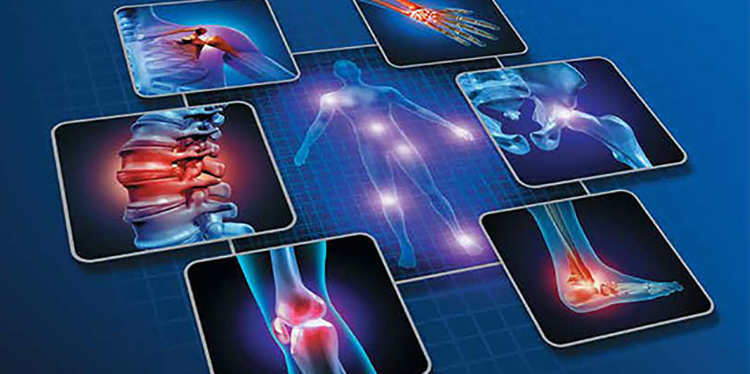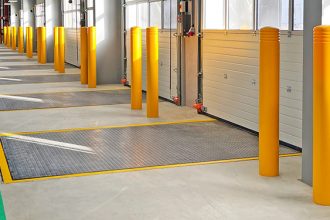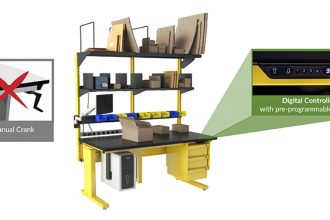
Warehouse operations, manufacturing facilities and distribution centers that invest in ergonomically designed technologies and training to help workers safely perform physical tasks will improve both their wellbeing and overall productivity. That’s because anywhere from a third to half of all workers’ compensation claims are related to manual material handling activities — the largest single cause of lost workday injuries — according to a recent article in MHI Solutions, “Innovative Ergonomics.” The article notes that 25% of work-related injuries are caused by a worker improperly lifting, carrying, pushing, or pulling something repetitively, or by attempting to manipulate a load too heavy to be handled manually.
Enter innovative ergonomic solutions and training on their proper use to both reduce the risk of workplace injuries and boost safety and productivity among workers. These solutions include:
- Positioners that hold pallet loads at the most ergonomic height — between 30 to 40 inches above the floor — as well as rotate the payload. Both functions allow the user to remain in one place and comfortably reach the work at hand without stretching, reaching, stooping, or bending.
- High-hinge tilters tip and elevate a bulk container of small parts for easier picking and better access to the bottom, preventing excessive reaching and bending while saving time and increasing productivity.
- Exoskeletons worn by employees reduce back strain during lifting and lowering of loads by providing assistive torque. This also enables them to handle more loads in a single shift than they could unassisted.
- Robotic arms perform monotonous, tedious picking and sorting activities, preventing repetitive stress injuries and freeing up workers for more value-added tasks.
- Autonomous mobile robots (AMRs) and automatic guided vehicles (AGVs) transport and carry loads throughout an operation — as an alternative to a worker pushing or pulling a cart or pallet jack — reducing employee fatigue and increasing productivity.
Additionally, the need for safety equipment to be easy to use is discussed. If a system is too heavy, cumbersome or difficult to operate, employees won’t use it. Therefore, safety systems should be engineered such that they operate without any effort on the part of the worker. For example, fall protection devices — such as dual-gate safety systems that secure openings at the edges of elevated work platforms and in pallet drop areas — ensure that one side of the barrier is always engaged. Powered systems are the easiest to operate. However, if a manually operated barrier is preferred, the gate should feature a counterbalanced design which uses its own inertia to raise one side as the other closes.
Finally, the MHI Solutions article recommends training employees on proper, ergonomic handling techniques to further reduce the risk of injuries and strains. Bionomics — a technique that teaches workers the natural laws of the body as it lifts, bends, pushes, and pulls a load — is explored as one training approach that helps employees better use their bodies, whether they’re interfacing with ergonomic equipment or not.
Want more recommendations for improving the ergonomics and enhancing the safety of your workforce? The Ergonomic Assist Systems & Equipment (EASE) Industry Group and the Protective Guarding Manufacturers Association (ProGMA) offer a variety of resources on their respective websites.



